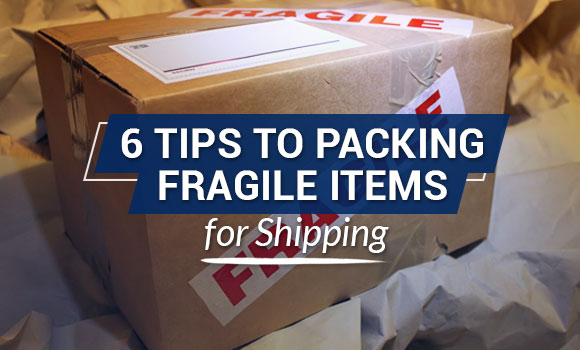As a business owner, there are times when you need to deliver fragile items. This means that shipping and moving these materials from one place to another carry certain risks such as damage and breakage. However, you cannot afford to let these things happen as it can ultimately affect your reputation in the industry.
Fortunately, there are essential guidelines you can follow to minimize these risks and help your packages remain safe during shipment. Here are 6 easy tips to packing fragile items for shipping.
How to Pack Fragile Items: 6 Effective Ways to Keep Products Safe
1. Choose the Right Packaging Box
First, you must identify the items you need to pack for delivery. This will help you choose the kind of box suitable for your items depending on its size and weight.
For instance, when shipping plates, choose a carton appropriate to the quantity and particular size of the following item. On the other hand, packing a mirror (or glass windows) typically requires a larger box.
In addition, you should opt for boxes that are specifically made for packing use. These types of boxes are thicker and sturdier, providing protection for your objects. They also come in uniform sizes so they stack better when put inside a delivery container.
Ultimately, selecting the right box can keep your items safe and undamaged.
2. Place Items in the Right Position
Make sure to put your items in the right position to minimize the risk of damage. Again, this would depend on the kind of items you choose to ship. Some products need to be placed upright while others need to be laid down inside the box. Here’s your basic guide to properly storing fragile items.
- Plates – Dishes are more likely to break when packed flatly. As such, it’s best to stack them vertically, with the larger plates placed at the bottom to act as a base for smaller plates.
Did You Know? Storing your plates vertically inside a box help reduce surface area, and thus the risk of breakage during transport.
- Cups and Glasses – Pack these items upright rather than laying them down. You should keep each cup separate but you can also stack them if they are uniform in size. Just make sure to do so carefully.
- Lampshades – Dismantle the lamp first before packing then put the circular base flatly inside the box.
- Picture Frames – Lay the box down and place the picture frame inside with the glass-side facing down.
- Vase – You should put vases inside a packing box in a vertical (upright) position.
3. Wrap with Package Cushioning Materials
It’s a must to wrap your items with cushioning materials such as bubble wraps, cardboard pieces, styrofoam pellets, and foam packing peanuts. These packaging cushions control the vibration and shock felt by fragile items. As a result, they reduce the chance of product damage.
However, select the material carefully according to the size, weight, and overall fragility of your items. For instance, foam peanuts are often used as a filler so objects don’t slide around during transportation. On the other hand, bubble wraps are used for items that can be easily scratched like glass.
4. Tie Items Together
When packing fragile objects, you should group similar items together and tie them tightly so they do not move around or slant while in transit.
Furthermore, pack items that have similar weight with the appropriate amount of packing material. This will help minimize the shock just in case the box is set down or dropped heavily.
5. Seal Everything Properly
After making sure each item is wrapped and tied properly, you can now seal the box.
Use thick and wide packaging tapes to ensure your box is tightly wrapped and secured. This ultimately ensures that no valuable items inside the box will fall out during transportation.
Tip: If you need extra protection, you can wrap the taped packaging box with another layer of bubble wrap.
6. Mark the Box ‘Fragile’
Lastly, you can then mark the box ‘fragile’. o This lets the courier company know that they’re handling easily breakable items, thus minimizing the risk of damage.
You can also put labels outside the boxes to identify which item is inside. This would eventually help you quickly unload and unpack the right packages you might need.
ALSO READ: Cargo Damage: How Can You Prevent It?
Moving fragile items can be quite tricky as these objects can be easily damaged or broken. Fortunately, with these important moving tips, you can keep your items safe and secure.
No time to do the packing all by yourself? Worklink Services Inc., a reliable logistics company in the Philippines, offers crating and packing solutions. With over 25 years of experience in the industry, we can ensure your package will arrive at its destination without getting damaged. Contact us today to learn more!
Found this post helpful? Check out our blog for other informative posts about shipping your goods.


